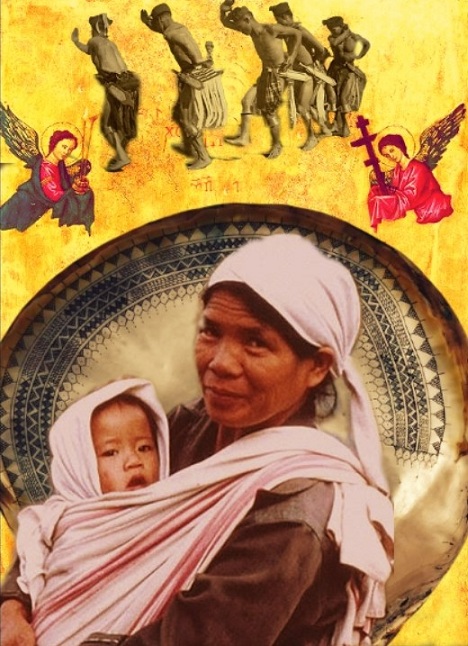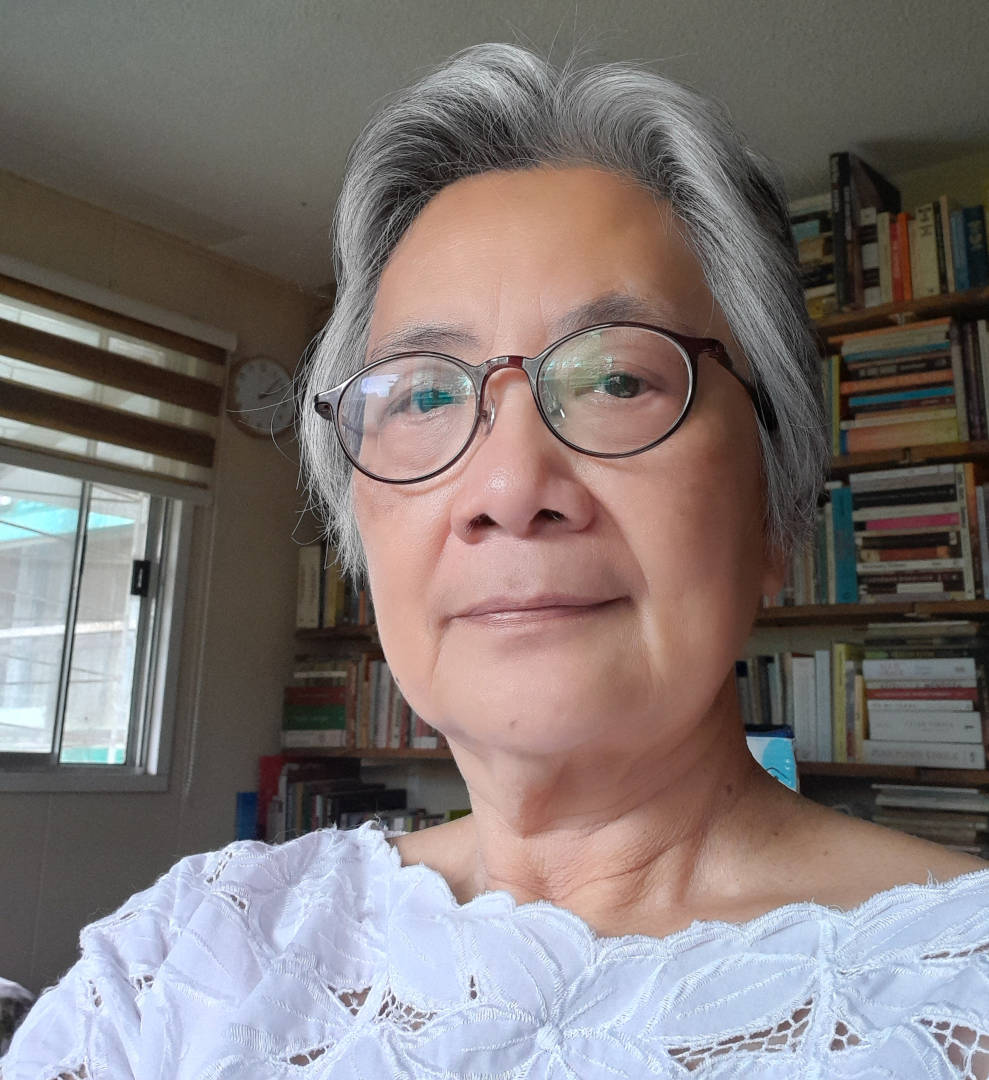His sudden death in May this year left the academic and art community of Baguio bereft. Prof. Delfin L. Tolentino Jr. wasn’t just a hardworking literature teacher, he was a wit, a raconteur, an aesthete, an artist himself.
Proof of this is his current, posthumous exhibition “Our Mother of Pearl” at the café of Museo Kordilyera at the University of the Philippines Baguio. The show runs until the end of the month as part of the university’s celebration of Buwan ng Wika.

In his remarks at the opening of the exhibit, Tolentino’s companion, retired Prof. Ben Tapang, said, “The journey of Tolentino into the visual arts Jr. stands out for its interdisciplinary boldness and quiet reverence for both tradition and reinvention. His works show how form, material and image combine to tell stories that go beyond language and culture. They invite us, viewers and readers both, to discover meaning in the very act of making.”
Furthermore, Tapang continued, Tolentino “approached collage as a process of assembly and erasure. Each composition in this exhibition… involves the careful selection of materials—digital images though they may be/ of vintage photographs, manuscript fragments, pressed leaves, newsprint and even fabric—cut, torn, arranged and fixed into place.”
Take the title collage, “Our Mother of Pearl,” that shows a northern indigenous woman with a baby cradled in a blanket and wrapped around her upper torso. Around her is a brass gong instead of a halo. Above her are Cordillera men dancing in their G-string and traditional head gear while Madonna and child are flanked by medieval angels. The combination of Eastern and Western cultures blends well, although to a few conservatives the images may seem heretic.
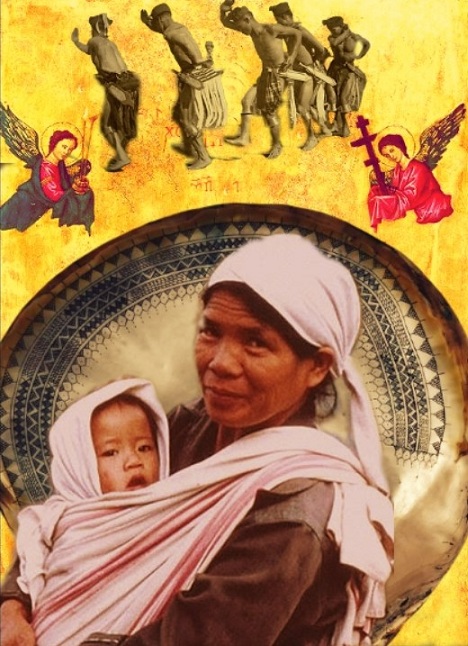
The collagist executed similar blendings, numbering almost 30, seamlessly arranging past images and present circumstances while somehow causing the viewer to pause and reflect, “Ah, yes, not much has changed in history.” As Tapang said, his colleague’s “work explores themes of identity, displacement and nostalgia.”
Take “In God We Trust,” as another example. At the center is a Filipino, an Indio, clothed in the garment of the 19th century, including a raincoat made of dried native grass and a protection for his head. It is an appropriation from the painter Damian Domingo who did a portrait series on Indios. Around the male figures are sacred images like photos of friars, Hellenic goddesses of the Greeks, a proud statue of Lapu-lapu facing its mirror image and above it all, an American eagle proclaiming “In God we trust.” Right there you catch the intellectual and conceptual Tolentino stating something on what the colonial masters left us—their religion/s and lingering power over us.
Tolentino’s light-hearted side is depicted in his collage “All Hail the Queens” wherein the country’s obsession with beauty pageants from early 20th century to the present is laid bare in a manner of speaking. Those from another century, from the Manila Carnival, are dressed in formal baro’t saya and are escorted by gentlemen, no doubt from prominent families like the ladies themselves. At center are present-day beauty queens in two-piece swimsuits with nary an ounce of modesty, with full smiles baring their teeth, not unlike their ancestors with close-lipped beams.
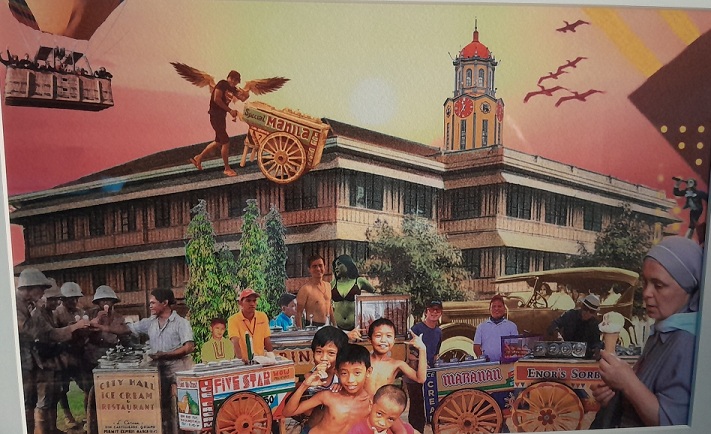
Equally playful is “If on a Sultry Day” that shows the Pinoy’s collective love for ice cream. Who doesn’t love ice cream? The collagist seems to be saying as he shows soldiers, children, a nun, a family in an early-model car stopping to enjoy this cold pick-me-up. The artist may have unintentionally wanted to show the folk art involved in decorating assorted ice cream carts. No cart and name are the same. There is even one called City Hall Ice Cream & Restaurant, and indeed the Manila City Hall tower looms over the people below.
“Homage to San Miguel” is a toast to the mainly male pastime of drinking from a brown bottle of pale Pilsen. Assorted sidewalk pulutan or finger food to go with the drink are shown along with the men enjoying their happy hour with the former San Miguel brewery building in the background. In contrast the women, no doubt pulutan sellers, look grim in their positions.
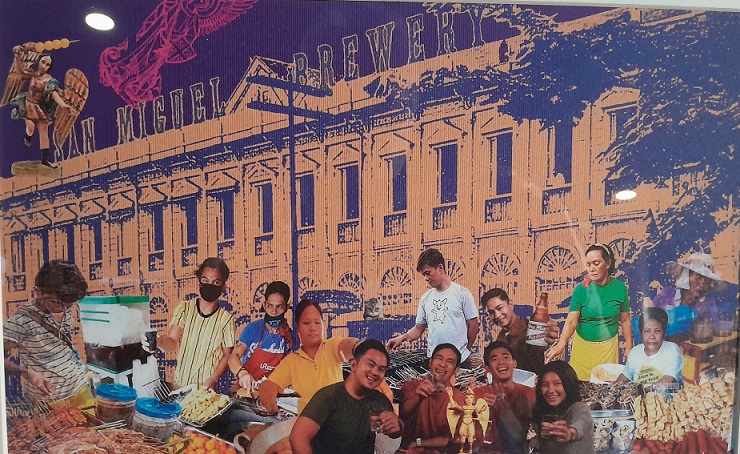
“From This Moment On” is a commentary on the wedding ceremony with various couples in gala attire and the focus of attention, at least from that moment on. A romantic Cupid hovers in the upper left and on the foreground are photographers at work, clicking away to keep a milestone event for posterity. Again there are Damian Domingo figures that are cutout images to stand perhaps for the bridesmaids or maids of honor. Like the beauty queens of another era, the brides (and grooms) look as solemn as their vows.
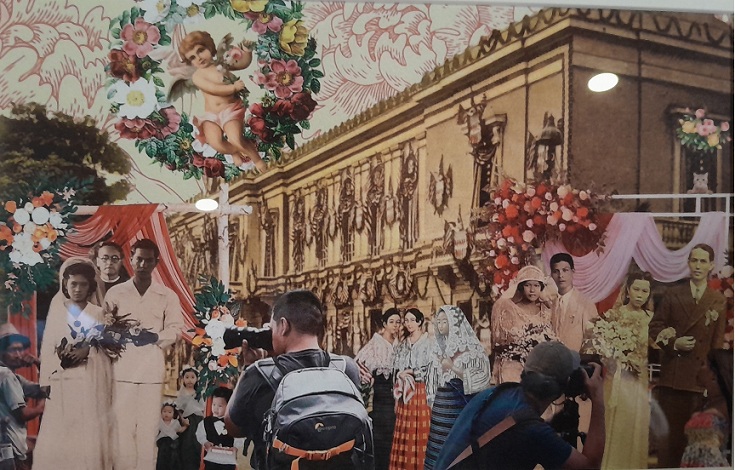
Tapang reminds us that in Tolentino’s works, “meaning is constructed each time from fragments. Each collage is an unfinished page—an invitation to look closer, investigate text and image and always to remember.”
“Mother of Pearl” is open from Mondays to Fridays at office hours.
